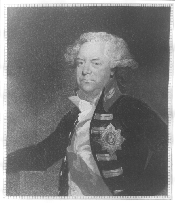Yonge Street's
Namesake:
Sir George Yonge
 |
| Sir George Yonge,
British Secretary of War, from a 1790 painting by Edmund Scott. Metropolitan
Toronto Reference Library |
Sir
George Yonge was
born in England in 1731 and educated at Eton College and the University of
Leipzig. During the years 1754 to 1761 and 1763 to 1796, he was a member of the
British House of Commons for the constituency of Honiton in the county of
Devon. Yonge served as a lord of the Admiralty from 1766 to 1770, as secretary
of war from 1782 to 1794, and as master of the mint from 1794 to 1799. He was
appointed governor of the colony of Cape of Good Hope in 1799, but his
administration proved so unpopular that he was recalled two years later. He
lived in retirement at Hampton Court, England, where he died in 1812.
Simcoe's
desire to flatter his British superiors persuaded him to name Dundas Street
after the secretary of state and
Yonge Street after the
secretary of war.
Sir George Yonge was an
especially logical choice for a namesake, since he was an old friend and
benefactor of
Simcoe's
family. And he happened to have an unusual connection with pioneer road
building - he was a member of the Royal Society of Antiquaries and an amateur
authority on Roman roads in Britain.
Sir George Yonge left no
children, so
Yonge Street is his
only legacy to the world.
|

